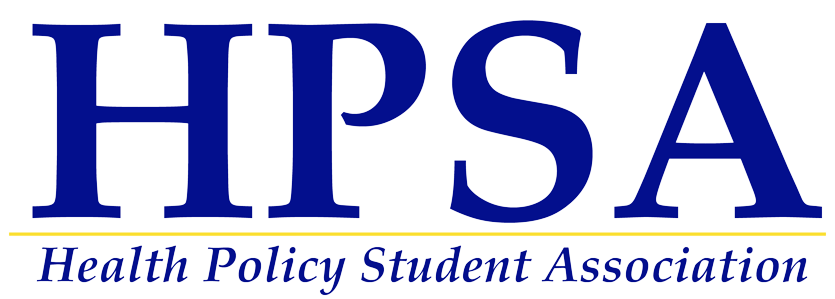Pandemic Vaccine Development
Christina Del Greco - HPSA Public Relations Committee
In today’s pandemic, everyone is clinging to the hope that we will soon receive a vaccine for COVID-19 that will allow us to resume our normal lives. However, there is a lot to know about how vaccines are normally developed, and how that process compares to the research being done on COVID-19 vaccines.
How do we normally test vaccines? 1,2
Vaccines—and other medicines—have to go through a rigorous approval process to determine if they are safe for the general public to take. After years of exploratory and pre-clinical research in a lab, as well as an application to the FDA to continue study, vaccines must undergo three phases of clinical trials. Phase 1 is the earliest and smallest trial. These trials typically have 100 or fewer healthy volunteers receive the vaccine in order to determine the overall safety of the vaccine, as well as the best dosage. Phase 2 trials include several hundred volunteers, and look broadly for the most common side-effects of the vaccine. In other words, the first two phases of trials are
Finally, phase 3 trials can have thousands of volunteers. These trials not only continue to evaluate general safety and efficacy, but also look specifically at how the infection rate of those that receive the vaccine compares to the rate of those that do not. This is important because vaccines only get approved if they are safe, effective, and the benefits outweigh the risks of potential side effects. Meaning, a vaccine that only provides minimal protection against a disease but causes many side effects would likely not be approved, because the benefits do not outweigh the risks.
To fully complete all research, phase 1-3 trials, and FDA-approval typically takes 10-15 years. This does not include pre-clinical research. Additionally, vaccines can fail out of any of the three trials, so just because phase 1 trials of a given vaccine look promising does not mean that that vaccine will pass phase 2 and 3 trials as well.
How are we testing the COVID vaccine? 3,4
The Trump administration has called its push for a rapidly-developed COVID-19 vaccine “Operation Warp Speed.” This program is a joint-governmental agency effort to provide funding to the most promising vaccine candidates in order to support their continued development. Additionally, these agencies are pouring money into distribution plans so that, when a vaccine does become available, it can be efficiently and equitably distributed to the general public. Collaborating agencies include Health and Human Services, the Centers for Disease Control and Prevention, the National Institutes of Health, the Department of Defense, and more, all of which are contributing funding to pharmaceutical companies.
The end goal of Operation Warp Speed is to have 300 million doses of a vaccine available to Americans by mid-2021. Importantly, Operation Warp Speed stresses that it wants to accelerate vaccine development while still maintaining overall safety and efficacy standards.
This is an unprecedented effort to safely develop a vaccine at record-speed. While the importance of a COVID-19 vaccine cannot be overstated, given the typical 10-15 year timeline of vaccine development, Operation Warp Speed critics remain wary of the speed of development.
What’s the status of COVID vaccines? 5,6,7
As of the writing of this post, there are three vaccines reporting promising results: based off of early data, Pfizer/BioNTech and Moderna boast that early data shows their vaccines might be ≥90% effective against COVID-19, while Oxford/AstraZeneca’s vaccine shows an efficacy closer to 70%. This is the percent reduction in COVID-19; or, in other words, compared to those that received the placebo, participants who received the vaccine were either 90% or 70% less likely to become infected with COVID-19. This is determined by comparing the number of infections in the vaccine group to the number of vaccines in the placebo group.
Interestingly, while the Moderna and AstraZeneca vaccines did in fact benefit from Operation Warp Speed (Moderna in particular received nearly $1 billion in funds), Pfizer/BioNTech did not receive any Operation Warp Speed funding.
Pfizer and Moderna are expected to file for emergency use authorizations soon assuming their final data analysis maintains the early results. Emergency use authorizations (EUAs) circumvent the typical requirement for companies to apply for FDA approval and licensure for their products. Given that the FDA approval process is time-consuming, EUAs essentially allow the use of non-FDA approved drugs and vaccines in emergency situations. There are concerns that using EUAs could be dangerous, given that the approval process requires less data. However, the FDA has said that they will evaluate vaccines with an emergency standard that, while requiring less data particularly from longer-term studies, still require nearly the same quality of data that traditional FDA approval does.
Overall, prospects for COVID-19 vaccines are high. Pfizer and Moderna’s vaccines in particular are much more effective than expected, which is incredibly good news. However, until a sufficient portion of the population is vaccinated—and to be fully vaccinated, it sounds like two doses will be required—current COVID-19 precautions such as mask-wearing and social distancing will need to remain in place, even among individuals who are vaccinated.
Sources
1 “The Journey of Your Child’s Vaccine.” Centers for Disease Control and Prevention, 30 July 2018
2 “Vaccine Development, Testing, and Regulation.” The History of Vaccines, 17 January 2018.
3 Caputo, Michael. “Fact Sheet: Explaining Operation Warp Speed.” Health and Human Services, 14 October 2020.
4 Slaoui, Moncef and Matthew Hepburn. “Developing Safe and Effective Covid Vaccines—Operation Warp Speed’s Strategy and Approach. New England Journal of Medicine, 383:1701-1703, 29 October 2020.
5 Branswell, Helen and Adam Feuerstein. “AstraZeneca Covid-19 vaccine is 70% effective on average, early data show.” STAT News, 23 November 2020.
6 Gollom, Mark. “Why Trump’s Operation Warp Speed is credited with helping race for COVID-19 vaccine.” CBC News, 19 November 2020.
7 “Johnson, Carolyn Y. and Aaron Steckelberg. “What you need to know about the Moderna and Pfizer coronavirus vaccines.” The Washington Post, 17 November 2020.
